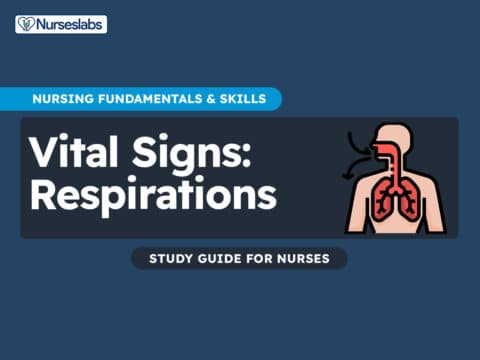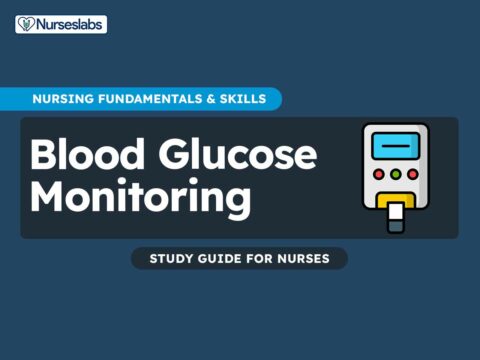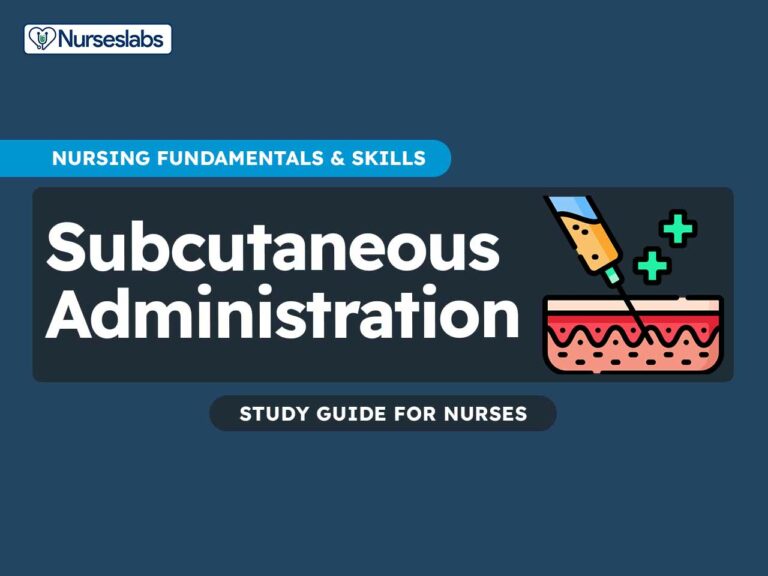Total Parenteral Nutrition (TPN) is a medical intervention that provides life-sustaining nutrients directly into the bloodstream for patients who cannot eat or absorb nutrients through the gastrointestinal tract. This is commonly used in critical care, oncology, and surgical patients with impaired gut function.
Nurses play a key role in administering and monitoring TPN safely, making it important to understand its components, uses, complications, and nursing responsibilities.
What is Total Parenteral Nutrition?
TPN, or Total Parenteral Nutrition is a form of nutritional support that bypasses the digestive system entirely, delivering essential nutrients directly into the bloodstream through a central venous catheter. This specialized solution is tailored to meet the individual needs of the patient, providing proteins, carbohydrates, fats, electrolytes, vitamins, and trace elements necessary for survival and recovery when the GI tract cannot be used.
Types of Parenteral Nutrition
Parenteral nutrition (PN) can be categorized based on the route of administration and the extent of nutritional support provided. The main types are Partial Parenteral Nutrition (PPN) and Total Parenteral Nutrition (TPN).
1. Partial Parenteral Nutrition (PPN). Partial Parenteral Nutrition (PPN) delivers nutrients intravenously through a peripheral vein to supplement oral or enteral intake, rather than meeting complete nutritional needs. It is less invasive, administered typically in the arm, and designed for short-term use, usually less than two weeks. PPN solutions have lower osmolarity to minimize the risk of vein irritation and thrombophlebitis.
2. Total Parenteral Nutrition (TPN). Total Parenteral Nutrition is an intravenous method of providing all necessary nutrients, bypassing the gastrointestinal tract entirely, for patients unable to eat or digest food normally. Administered through a central venous catheter, typically placed in the superior vena cava, TPN delivers highly concentrated nutrient solutions. It offers complete nutritional support and is suitable for long-term use, extending from weeks to years depending on the patient’s condition.
Routes of Administration
A central venous catheter is the standard for long-term PN administration, requiring strict aseptic insertion and exclusive use of one lumen for PN to prevent infection. For short-term use, peripheral veins can be accessed via a PICC, and separate lumens or devices must be used for administering other medications or infusions
- Central Venous Access. A CVC is inserted into a large central vein, typically the subclavian, jugular, or femoral vein, with the catheter tip positioned in the superior vena cava. This route is preferred for long-term PN or when hyperosmolar solutions are needed, as large veins can handle the high concentration of nutrients without causing damage.
- Peripherally Inserted Central Catheter (PICC). A PICC is inserted through a peripheral vein, often in the arm, and threaded into the central venous system with the tip in the superior vena cava. It provides a less invasive alternative to a CVC and can be used for short- to medium-term PN administration.
- Peripheral Venous Catheter (PVC). In some cases, a PVC can be used to administer PN through smaller peripheral veins. However, only lower concentrations of nutrients can be delivered this way because peripheral veins are more susceptible to damage from hyperosmolar solutions, increasing the risk of thrombophlebitis.
- Tunneled Catheter (e.g., Hickman, Broviac). A tunneled catheter is surgically placed under the skin and directed into a central vein (usually the superior vena cava). It is used for long-term TPN administration (months to years).
- Implanted Port (Port-a-Cath). An implanted port is a small device placed under the skin and connected to a catheter that leads to a central vein. It is suitable for long-term TPN, especially in patients requiring intermittent or long-term therapy.
Indications
Parenteral Nutrition is indicated for patients who cannot meet their nutritional needs through oral or enteral feeding due to various medical conditions, including:
- Non-functional GI Tract. Conditions such as bowel obstruction, short bowel syndrome, severe inflammatory bowel disease (e.g., Crohn’s disease), or ileus.
- Severe Pancreatitis. When oral or enteral feeding exacerbates symptoms.
- Malabsorption Syndromes. Conditions like celiac disease or radiation enteritis where the absorption of nutrients is impaired.
- Severe Burns or Trauma. High metabolic demands and the inability to meet these needs orally or enterally.
- Post-operative Complications. Patients who have undergone major abdominal surgery and are unable to tolerate enteral feeding.
Components of Parenteral Nutrition
Parenteral Nutrition solutions are carefully formulated to meet the patient’s individual nutritional needs depending on age, body weight, fluid status, energy requirements, electrolyte balance, and medical condition. A typical TPN solution contains:
| Component | Description | Requirement |
|---|---|---|
| Fluids (Water) | Main component, serving as the base for mixing macronutrients, micronutrients, and trace elements. Contributes to overall fluid intake and hydration. | 25-35 mL/kg/day (adjusted based on age, renal function, etc.) |
| Carbohydrates (Dextrose) | Primary energy source. Concentration varies (e.g., 5%, 10%, 25%, 50%) depending on caloric needs. | 3-5 mg/kg/min or 50-60% of total caloric intake |
| Proteins (Amino Acids) | Provides essential and non-essential amino acids. Higher needs for healing in cases like burns, infections, or post-surgery. Supports tissue repair, growth, and muscle maintenance. | 0.8-2.0 g/kg/day, depending on condition |
| Fats (Lipid Emulsion) | Supplies essential fatty acids and a concentrated energy source. | 0.5-1.5 g/kg/day or 20-30% of total calories |
| Electrolytes | Maintains fluid, acid-base, and neuromuscular balance. Levels adjusted based on fluid status, organ function, and losses (e.g., vomiting, diarrhea). | – Sodium: 1-2 mEq/kg/day – Potassium: 1-2 mEq/kg/day – Calcium: 10-15 mEq/day – Magnesium: 8-20 mEq/day – Phosphorus: 20-40 mmol/day |
| Vitamins | Ensures adequate supply of essential vitamins for metabolic and enzymatic functions. Multivitamin preparations are added to meet daily vitamin needs. | – Fat-soluble: A, D, E, K – Water-soluble: C, B-complex |
| Trace Elements | Small quantities needed for wound healing, immune support, and antioxidant defense. Each element plays a specific role in cellular metabolism. | – Zinc: 2.5-5 mg/day – Copper: 0.3-0.5 mg/day – Manganese: 60-100 mcg/day – Selenium: 20-60 mcg/day – Chromium: 10-15 mcg/day |
| Additives (Medications) | Some medications or supplements may be added to TPN (e.g., insulin for glucose control, heparin to prevent catheter occlusion). | Specific to patient’s needs |
Complications
Here is a list of potential complications of Total Parenteral Nutrition (TPN) administration:
- Infection (Catheter-related bloodstream infections). Since TPN is administered through a central venous catheter (CVC), there is a significant risk of infection due to the direct access to the bloodstream. This can lead to sepsis, a life-threatening complication.
- Hyperglycemia. High dextrose content in TPN can cause elevated blood glucose levels, especially in patients with diabetes or insulin resistance thus glucose levels need to be closely monitored.
- Hypoglycemia. Abrupt discontinuation of TPN or a sudden reduction in the dextrose concentration can lead to hypoglycemia.
- Electrolyte Imbalances (e.g., hypokalemia, hypernatremia). TPN administration can cause shifts in electrolytes, leading to imbalances such as hypokalemia (low potassium), hypernatremia (high sodium), or hypomagnesemia.
- Fluid Imbalance (Hypervolemia or Hypovolemia). TPN can lead to fluid overload (hypervolemia) or inadequate fluid intake (hypovolemia), particularly in patients with cardiac or renal issues.
- Refeeding Syndrome. Refeeding syndrome is a life-threatening condition that can occur when severely malnourished patients are started on TPN. It is characterized by electrolyte shifts (e.g., hypophosphatemia, hypokalemia) and fluid imbalances due to rapid reintroduction of nutrients.
- Liver Dysfunction (Cholestasis or Hepatic Steatosis). Prolonged use of TPN can lead to liver complications, such as cholestasis (reduced bile flow) or fatty liver (hepatic steatosis). This is more common in patients on long-term TPN.
- Thrombosis (Catheter-related). The central venous catheter used for TPN can lead to blood clots (thrombosis), which can cause venous obstruction or embolism.
- Micronutrient Deficiencies or Toxicity. Imbalances in the vitamin and trace element content of TPN can lead to deficiencies or toxicities of micronutrients.
- Metabolic Bone Disease (Osteoporosis). Long-term TPN use can lead to bone demineralization and osteoporosis, particularly if calcium and phosphorus balance is not maintained.
Administering Total Parenteral Nutrition (TPN)
Following these guidelines will facilitate the proper setup and administration of TPN infusion:
1. Verify the physician’s orders against the MAR and TPN solution label, ensuring all components and the infusion rate match the orders. Double-checking ensures the correct formulation and dosage of nutrients are administered to the patient. Any discrepancies between the orders and the TPN solution must be addressed immediately to prevent complications.
2. Gather all the supplies. Make sure to collect all the following supplies:
- TPN solution
- Additives or multivitamins if needed
- A sterile barrier
- A TPN solution administration set
- 10 mL syringes
- An insulin syringe (if needed)
- 2% Chlorhexidine or alcohol swabs
- Sterile gloves
- Sterile mask
- Heparin/Saline flush syringes
- Infusion pump
- A sharps container
3. Perform hand hygiene by thoroughly washing your hands with soap and water for at least 20 seconds. Use a clean towel or paper towel to dry your hands afterward. Reduces the risk of infection when handling the TPN solution and accessing the central line.
4. Assess the patient’s baseline condition. Baseline data, including vital signs, electrolytes, and glucose levels, help guide safe administration and monitoring.
5. Inspect the TPN solution. Check the TPN bag for any signs of contamination, such as cloudiness, visible fat particles, discoloration, or leaks. Remove the TPN bag from the refrigerator 2 hours before ensuring the TPN bag is at room temperature prior to administration.
6. Add Medications or Multivitamins Into the TPN. Adding medications or vitamins to a TPN bag must be done with strict attention to sterility and compatibility to ensure the safety and efficacy of the solution.
- Clean the injection port on the TPN bag. Use an alcohol pad to disinfect the area.
- If using a needle:
- Remove the needle cap and insert the needle carefully into the center of the injection port.
- Avoid puncturing or damaging the bag by ensuring the needle is placed directly in the center of the port.
- If using a needle-less system:
- Attach the syringe by screwing it onto the needle-less port.
- Inject the medication or vitamin by slowly pushing the plunger of the syringe to introduce the solution into the TPN bag.
- Remove the syringe (and needle, if applicable) from the TPN bag once the solution has been added.
- Gently mix the solution by rocking the TPN bag to ensure the medication or vitamin is properly incorporated.
- Repeat the procedure for each additional medication or vitamin that needs to be added to the TPN solution.
7. Prepare the Infusion Set Using Aseptic Technique. Aseptic technique prevents contamination and reduces the risk of central line-associated bloodstream infections (CLABSI).
8. Remove the protective cap from the administration set and insert the spike into the TPN bag’s port. Ensures a sterile connection between the TPN bag and the administration set, maintaining the integrity of the infusion.
9. Prime the Infusion Set with the TPN Solution by allowing the solution to flow through the tubing. Removes air from the tubing, preventing air embolism during infusion.
10. Assess the Central Venous Catheter or PICC Line Site. Checks for signs of infection, such as redness or swelling, ensuring that the access site is in optimal condition before initiating infusion.
11. Flush the catheter by first cleaning the port with an alcohol wipe, then connect a saline-filled syringe and gently flush the catheter. This ensures that the catheter remains patent and free of blockages, while maintaining sterility to prevent infection.
12. After the saline flush, clean the port again, and repeat the process using a heparin-filled syringe to prevent clot formation. Heparin prevents clotting in the catheter, ensuring long-term patency and reducing the risk of catheter occlusion.
13. Attach the TPN solution to the IV line or catheter. Safely connects the TPN solution to the patient, allowing proper delivery of nutrients.
14. Start infusion at the ordered rate using an infusion pump. Using a pump ensures controlled, accurate delivery of TPN, minimizing the risk of fluid overload or rapid electrolyte shifts.
15. Document the procedure and patient’s response. Accurate documentation ensures continuity of care and allows for tracking of the patient’s progress and response to therapy.
How to Disconnect the TPN solution
Once the infusion is complete, the pump will trigger an alarm, indicating the need to disconnect the TPN tubing from the central venous catheter (CVC).
1. Stop the infusion when all the fluid has been delivered. Ensures the patient receives the entire prescribed volume of TPN and prevents air from entering the bloodstream when disconnecting the line.
2. Wash hands and put on sterile gloves. To protect against contamination by hazardous substances.
3. Disconnect the infusion set and clean the injection site or cap with a 2% chlorhexidine swab, allowing 30 seconds to dry. Safely removes the connection between the TPN solution and the catheter without contamination.
4. Flush the device with 10 ml of 0.9% sodium chloride. Flushing the line clears residual TPN solution from the catheter, preventing blockages, and reduces irritation to the vein or port site.
5. Use the push-pause technique for flushing. This technique helps maintain catheter patency by creating turbulent flow, reducing the risk of blockages or occlusions.
6. Administer final flush and end with positive pressure. Ending with positive pressure ensures the catheter remains open, preventing blood from refluxing into the line and causing clots.
7. Attach a new sterile cap (if necessary) or change the injection cap (weekly). A sterile cap maintains a closed system, reducing the risk of infection and maintaining sterility of the catheter line.
8. Dispose of used supplies in biohazard containers. Proper disposal of potentially contaminated materials prevents cross-contamination and maintains a safe environment.
Nursing Considerations
When caring for a patient with a TPN line, nurses must prioritize the following considerations:
See also: Total Parenteral Nutrition (TPN) Nursing Care Plans
1. Observe the TPN bag for cloudiness, visible particles, or fat layering (creaming) to detect lipid aggregation early. Lipid particulate aggregation in TPN is the clumping of fat particles in the lipid emulsion, caused by factors like improper mixing, extreme temperatures, or component incompatibility.
2. Follow strict aseptic technique and regularly monitor the catheter site for signs of infection (e.g., redness, swelling, discharge), adhering to central line care protocols. This prevents catheter-related infections and complications by maintaining sterility and ensuring early detection of infection at the insertion site.
3. Regularly monitor blood glucose levels and administer insulin as prescribed, adjusting the dextrose concentration in the TPN if necessary based on glucose results. Monitoring and adjusting glucose levels help prevent hyperglycemia, ensuring the patient maintains stable blood sugar levels during TPN therapy.
4. Gradually taper off TPN (especially among patients who are on insulin) while frequently monitoring blood glucose levels to prevent and manage hypoglycemia. The PN rate should be gradually reduced over several hours to allow the pancreas to adjust to lower glucose levels and decreased insulin demand. This slow tapering process helps minimize the risk of hypoglycemia by preventing a sudden drop in blood sugar as the body adapts to the lower glucose intake.
5. Monitor serum electrolytes and adjust the TPN composition accordingly based on lab results. Regular electrolyte monitoring and adjustments help maintain balanced electrolyte levels, preventing complications from imbalances such as arrhythmias or muscle weakness.
6. Monitor daily fluid balance, including intake, output, and signs of fluid overload or dehydration. Monitoring fluid balance helps identify fluid imbalances early, allowing prompt interventions to prevent complications such as edema, dehydration, or high blood pressure.
7. Start TPN slowly in malnourished patients, gradually increasing the rate while monitoring for signs of refeeding syndrome such as weakness, confusion, respiratory distress, or arrhythmias. Gradual initiation of TPN prevents overwhelming the body, while close monitoring for refeeding syndrome allows for early detection and management of serious complications like electrolyte imbalances and cardiac problems.
8. Monitor liver function tests and adjust the TPN infusion rate or composition if abnormalities arise. Modify the lipid content and transition to enteral feeding as soon as possible to reduce liver strain. Monitoring liver function allows for early detection of hepatotoxicity, and adjusting TPN or transitioning to enteral feeding helps minimize liver stress, preventing further damage and complications.
9. Assess the catheter site for signs of thrombosis and administer anticoagulants as prescribed. Anticoagulants help prevent clot formation, reducing the risk of complications such as catheter occlusion or embolism.
10. Monitor micronutrient levels in long-term TPN patients, adjusting the formulation and supplementing as needed while avoiding over-supplementation to prevent toxicity. Routine monitoring and adjustment of micronutrients help maintain a proper balance of vitamins and trace elements, preventing deficiencies and avoiding the risk of toxicity, particularly with fat-soluble vitamins.
11. Monitor bone density in patients on long-term TPN. Ensure adequate calcium, phosphorus, and vitamin D intake in the TPN formulation. Prolonged TPN use can lead to bone demineralization and osteoporosis. Ensuring adequate intake of calcium, phosphorus, and vitamin D in the TPN formulation supports bone health and reduces the risk of fractures and bone-related complications.
12. Use a different lumen or a separate access device to obtain samples or measurements. Using the same port for both TPN infusion and blood sampling or CVP monitoring can lead to inaccurate readings and contamination of blood samples, as TPN components may interfere with laboratory results and CVP accuracy.
Sources and References
- Doyle, G. R., & McCutcheon, J. A. (2015). 8.8 Total Parenteral Nutrition (TPN). Clinical Procedures for Safer Patient Care.
- Kovacevich, D. S., Corrigan, M., Ross, V. M., McKeever, L., Hall, A. M., & Braunschweig, C. (2019). American society for parenteral and enteral nutrition guidelines for the selection and care of central venous access devices for adult home parenteral nutrition administration. Journal of Parenteral and Enteral Nutrition, 43(1), 15-31.
- Pironi, L., Boeykens, K., Bozzetti, F., Joly, F., Klek, S., Lal, S., … & Bischoff, S. C. (2020). ESPEN guideline on home parenteral nutrition. Clinical nutrition, 39(6), 1645-1666.
- Raman, M., Almutairdi, A., Mulesa, L., Alberda, C., Beattie, C., & Gramlich, L. (2017). Parenteral nutrition and lipids. Nutrients, 9(4), 388.
- Worthington, P., Balint, J., Bechtold, M., Bingham, A., Chan, L. N., Durfee, S., … & Holcombe, B. (2017). When is parenteral nutrition appropriate?. Journal of Parenteral and Enteral Nutrition, 41(3), 324-377.





































Leave a Comment